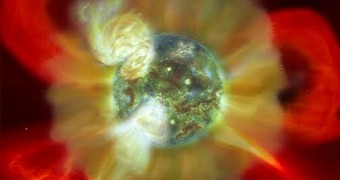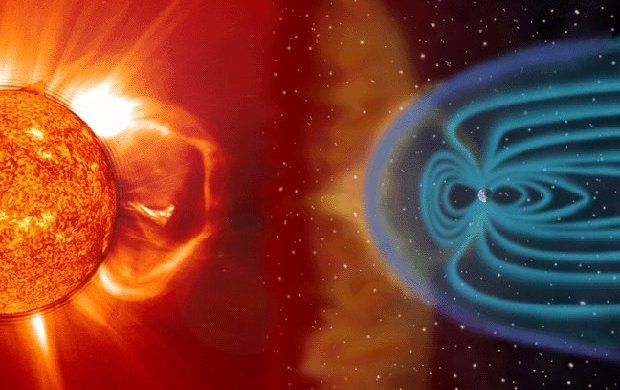In a report published earlier this week in NASA's Astrobiology Magazine, scientists argue that, when younger, the Sun was probably aggressive and temperamental enough to occasionally try and turn our planet into a deep-fried cosmic meatball.
Thus, astrophysicist Vladimir Airapetian and colleagues have reasons to believe that, in its youth, our parent Star was well capable of producing flares powerful enough to move through Earth's atmosphere and did not shy away from doing just that every once in a while.
Interestingly enough, the researchers further theorize that, all things considered, it is safe to assume that these flares that the Sun likely produced when younger influenced the evolution of life on our planet. Thus, they might have either hindered or, on the contrary, supported it.
What do they know that the Sun was up to in its youth?
Unlike other teenagers, young Sun didn't exactly keep a diary that astronomers could now turn to to figure out what its favorite pastime activities were. The only way to learn more about what our parent star was like in its early years is by studying other celestial bodies similar to it.
Scientist Vladimir Airapetian and fellow researchers say that, with the help of NASA's Kepler space observatory, launched back in March 2009, they managed to study several Sun-like stars and found that, during their adolescence, such celestial bodies throw impressive tantrums.
Specifically, the 279 stars that this investigation focused on were seen producing flares about 10,000 times stronger than any of the ones thus far documented on the surface of the Sun. The strength of these flares is due to the fact that, when young, stars are more magnetically active and rotate faster.
“Solar flares represent the most violent eruptions in the Solar System,” NASA astrophysicist Vladimir Airapetian said in a statement. “They release energy comparable to a couple billion megatons of TNT in a few minutes,” the specialist went on to explain.
How the Sun liked to toy with Earth during its adolescence
These flares that stars produce all throughout their life are essentially sudden and freakishly massive bursts of radiation. When observed with the naked eye, they look like insanely bright flashes of light. Still, astronomers say that they are much more than this.
During a flare, particles such as such as electrons and ions, together with all sorts of atoms, are not so gently pushed through the aura of plasma that surrounds a star and released into space. As mentioned, such events are accompanied by releases of massive amounts of harmful radiation.
The radiation produced by solar flares in this day and age is not strong enough to move through Earth's atmosphere and affect us humans or any of the creatures we share our planet with. Eons ago, however, solar flares were probably much stronger and, therefore, well capable of penetrating the atmosphere.
In fact, scientists suspect that, during its first few hundred million years of life, the Sun coughed out flares thousands of times stronger than the ones documented on its surface in recent years as often as 250 times per day.
It's safe to assume that at least some of these flares that the Sun likely produced before it grew older and friendlier managed to bend young Earth's magnetic field and send energetic particles to bombard our planet's atmosphere and even surface.
How the Sun shaped the evolution of life on Earth
It's common knowledge that, in the absence of the Sun, life on our planet would not be possible. What's interesting is that, by the looks of it, chances are that our parent star influenced the emergence and the evolution of life on Earth in more than one way.
Thus, researcher Vladimir Airapetian and his team say that, on the one hand, it is possible that the massive flares the Sun produced during its adolescence hindered the rise of life by blasting the surface of our planet with a heck lot of harmful radiation.
Then again, it is also possible that this energetic radiation actually jump-started and sustained the chemical processes that eventually birthed life on Earth. If this is indeed what happened, it's a good thing that the Sun was quite a rebellious teenager.
As Vladimir Airapetian put it, “High levels of steady, intense radiation could have opened a 'window of opportunity' for the origin of life on Earth by setting a stage for prebiotic chemistry it requires.”

 14 DAY TRIAL //
14 DAY TRIAL // 

